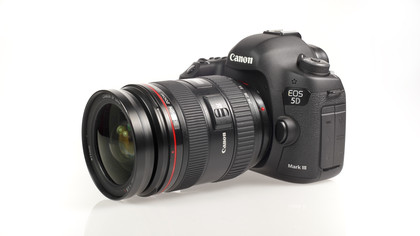Canon 5D Mark III vs Nikon D800
Full-frame DSLRs go head to head
Canon's EOS 5D was the first camera that brought full-frame digital photography within reach of enthusiast photographers. When it was replaced by the 5D Mark II, stills photographers were a little underwhelmed by the relatively minor upgrades, but the addition of video technology made it interesting to a new breed of users.
The Canon EOS 5D Mark III builds on what Canon has achieved with the first two incarnations of the 5D series and incorporates technology such as iFCL metering and the DIGIC 5 processor found in its other recent cameras. It also produces superbly sharp and detail-rich images.

If the Nikon D800 didn't exist, the 22.3 million pixel resolution of the 5D Mark III would seem more than adequate for most people. However, the D800 does exist, and although its 36.3 million pixel sensor requires slightly more careful handling, it isn't as troubled by noise as we might have feared. This, coupled with its class-leading resolving power, impressive dynamic range and lower price, makes the D800 a very attractive option.
However, the fact that the D800 tends to produce more noise in low light - especially when the light is unnatural - and the lower maximum continuous shooting rate mean that it is marginally less versatile than the 5D Mark III.
We also think that Canon has put a little more thought into how professional and enthusiast photographers use their cameras. The 5D Mark III's HDR mode, for example, is much more useful for serious photographers, and the video activation is more comfortably arranged.

In summary, both cameras are extremely good, and choosing between them isn't easy. It's a decision that is likely to come down to personal preferences for the control arrangements, existing allegiances and the intended use.
Those who shoot in a wide range of conditions, or have a preference for sport and low-light photography, are likely to find they are best served by the Canon EOS 5D Mark III.
Sign up for breaking news, reviews, opinion, top tech deals, and more.
But photographers who shoot primarily in good light and who are interested in capturing the maximum amount of detail possible, perhaps specialising in landscape, still-life or macro photography, will find that the Nikon D800 is a better choice.